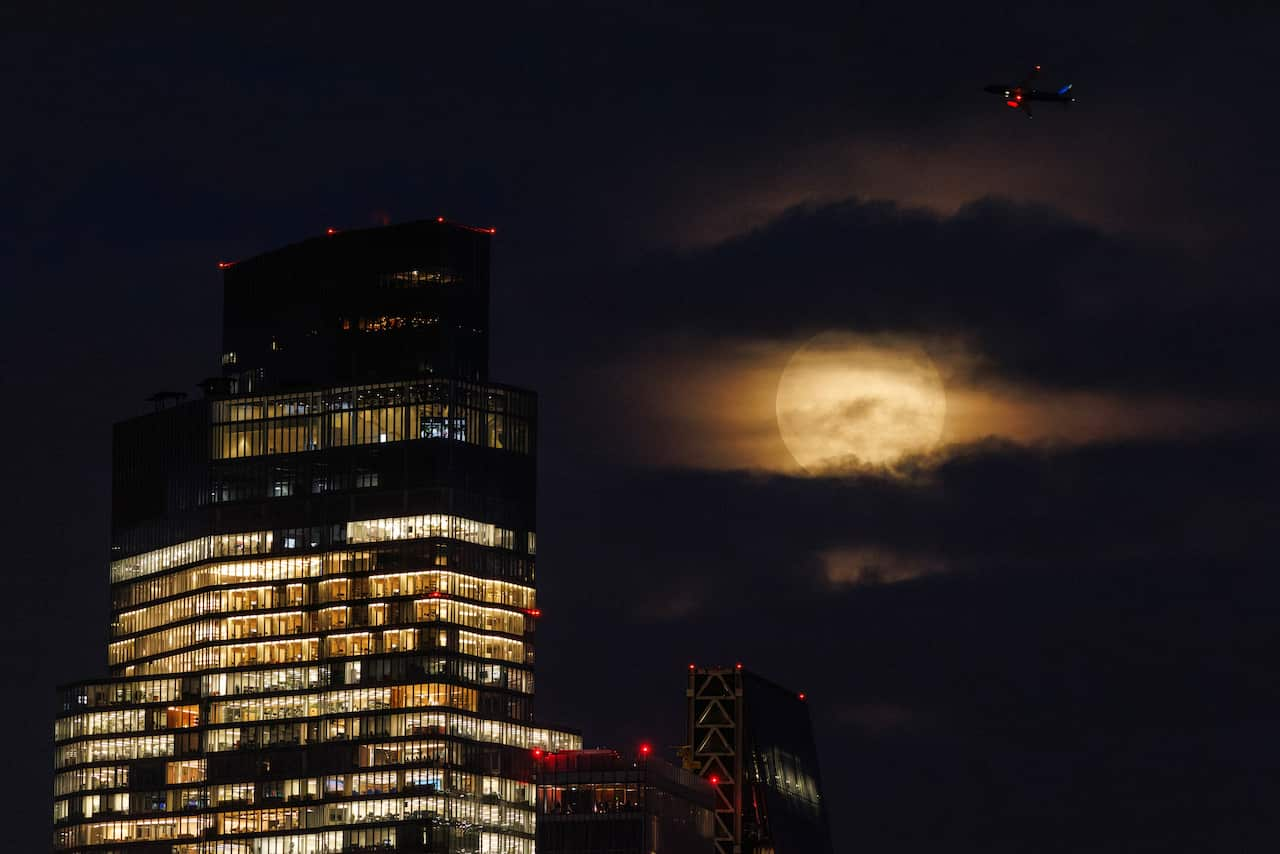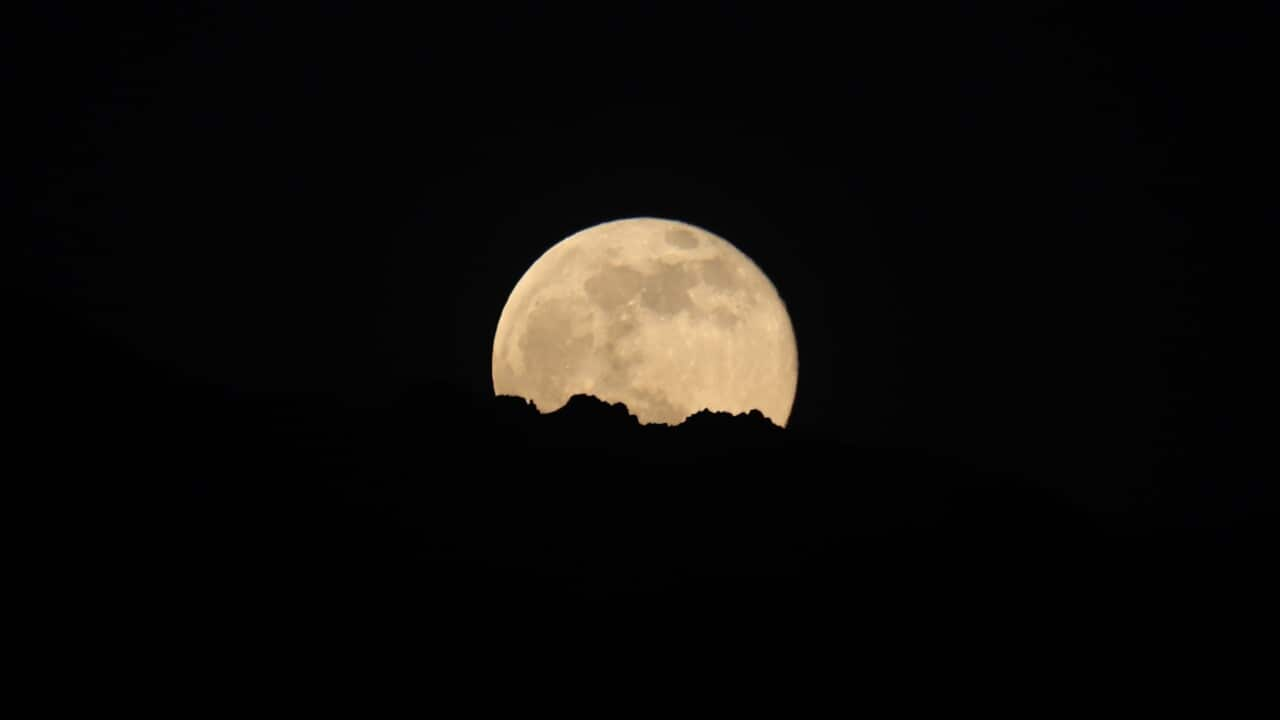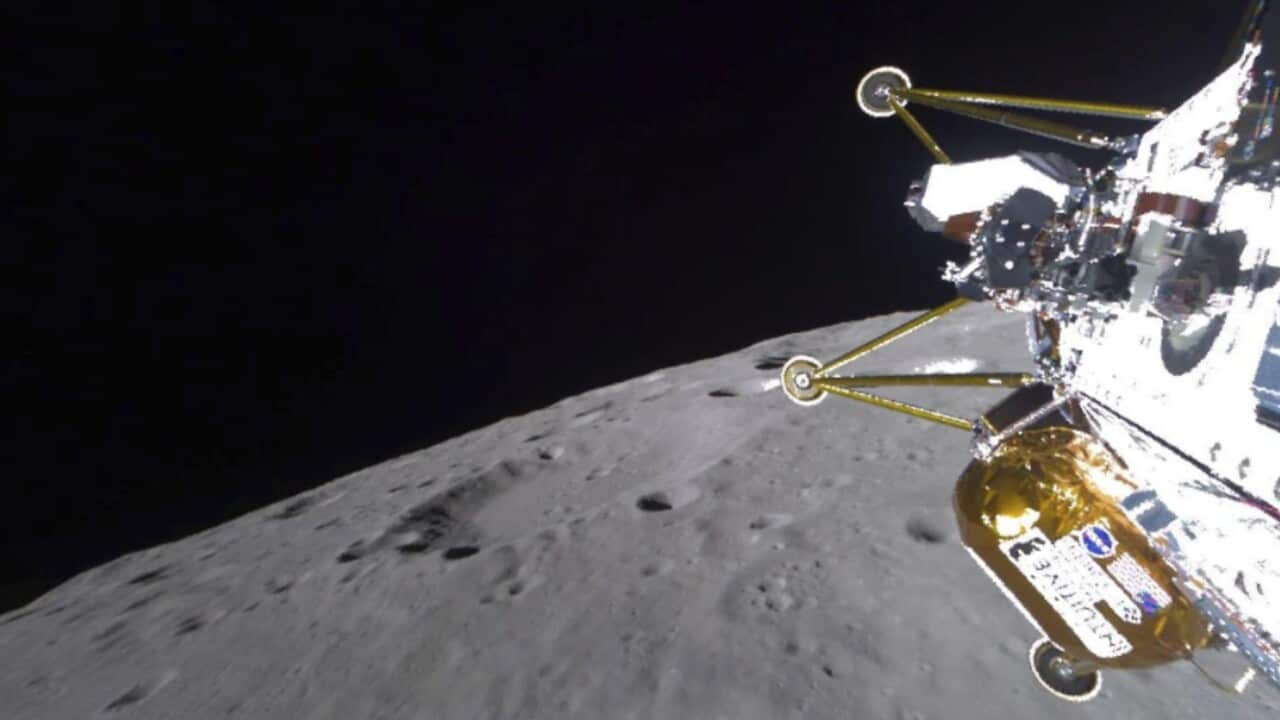On Tuesday evening, Australians looking towards the night sky may have noticed a particularly bright, particularly large moon.
It was the year's first supermoon, otherwise known as a 'harvest moon' — the name given to the full, bright moon that occurs closest to the start of autumn in the northern hemisphere and spring in the southern.
The name is derived from times when farmers depended on the moon's light to harvest their crops late into the night in the northern hemisphere, and the moon's light was particularly important during autumn, when harvests are the largest.
While those who missed out on the harvest moon may be disappointed, there are more supermoons to come before the end of the year.
What is a supermoon?
The moon doesn't quite orbit Earth in a perfect circle. Supermoons are full moons that coincide with the moon's closest approach to Earth in its elliptical orbit, making it appear around 10 per cent larger because it's closer to us.
The moon's closest point to Earth is known as perigee, and during its 27-day orbit around Earth, the moon reaches both its perigee, about 363,000km from Earth, and its farthest point — or apogee — about 405,500km from Earth.
Supermoons are rare and only a few occur each year, but another two can be expected in the coming months: on 5 November and 4 December.
Adam Batten, an astronomer from Swinburne University of Technology, said supermoons come in sets every year due to the position of the Earth around the sun and the position of the moon around Earth.
"Because the Earth's orbit doesn't move too much between months, you kind of get them in a row. So if there's a supermoon one month, it's very likely that the month either side of it will also be a supermoon because it's not moving too much, so it's also going to be very big," Batten said.
Beyond dominating the night sky, supermoons can also cause tangible changes on Earth in the oceans.
"Moons are obviously very linked to the ocean tides, so a moon that is closer to the Earth will have a bigger effect," he said.
"Tides are going to be stronger during a full moon — but even bigger during a supermoon, so you might get an even bigger king tide if it's the right circumstances for that."
Wait, what is a full moon again?
Batten said the different phases of the moon can be thought of as different positions around the Earth, and full moons happen when the moon is directly opposite the sun, with the Earth in between.
That's because the sun's light reflects off the moon back onto the Earth.

This week's harvest moon, as seen from London. Source: Getty / Dan Kitwood
"If you put the moon on the same side of the Earth as the sun — so you've got the sun, the moon in the middle, and then the Earth on the other side — you're going to get a 'new moon', so it's going to be very, very dark."
'No-one talks about micromoons'
A 'micromoon' is the opposite of a supermoon and occurs when the moon is at its furthest point away from Earth in its elliptical orbit, making it appear quite a lot smaller.
This will occur in around March, Batten said, and while it may be less exciting to see, it provides better conditions for viewing the stars.
"No-one talks about a micromoon and it's a real shame — it's better for astronomy if the moon is smaller," he said.
"The moon's actually a little bit of a pain in the butt for a lot of astronomers; it ruins a lot of nights. A full moon blocks out so many stars, it makes it really hard to observe things from the ground. So, we actually like it when the moon is as dark as possible or as small as possible."
Share



